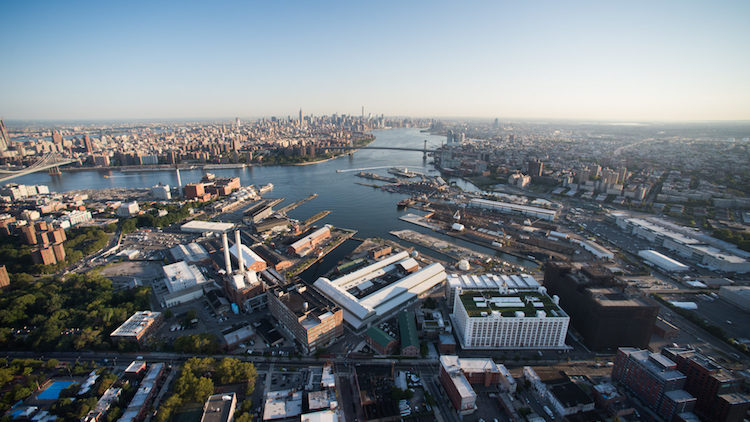
The Brooklyn Navy Yard development in New York is adopting Cityzenith’s SmartWorldOS digital twin platform to help reduce its carbon footprint.
The Navy Yard’s Building 77 is a 92,900 sq m warehouse recently converted for commercial and manufacturing use.
Haym Gross, chairman of the Navy Yard’s developer, NYC 2030, said: “The digital twin will provide Brooklyn Navy Yard with the capability to comprehensively monitor building performance and plan energy sustainability and climate resilience projects. Expanding the model to the surrounding area will demonstrate the potential for including neighbouring properties and facilities in community-scale sustainable projects and urban-scale innovative planning.”
Cityzenith’s involvement in the project starts its Clean Cities – Clean Future programme. Founder and CEO Michael Jansen explained: “We are honoured to start our initiative in New York City with NYC 2030 District and energy resilience provider AFG. Cities produce more than 75% of the world’s carbon emissions, and their buildings account for 50%-70% of that – the figure could be as high as 80% in Manhattan. That makes buildings the single biggest polluter on the planet.
“Here’s the big challenge we’re addressing: for commercial property owners, there is no single path to getting to net zero emissions, so they don’t move. Achieving net zero emissions in buildings requires simultaneous deployment of multiple strategies, including real-time energy monitoring, onsite renewable power generation, and the purchase of carbon offsets. Property owners need a clear predictable engineering solution and financial structure.
Jansen added that many property owners turn to green building retrofit consulting services, which are labour-intensive, costly, and not risk-free. “The Brooklyn Navy Yard digital twin project will seek to automate these currently manual services in a single easy-to-use solution that is more comprehensive, more accurate, and much less expensive,” he said.
“Digital twin technology’s ability to aggregate, visualise and analyse 3D and 4D data and correlate efficiencies among multiple systems is ideal to solve this problem, providing an optimised net zero building engineering solution that makes financial sense.
“Our goal is to show how an investment of $0.10 per sq ft will unlock $3-$5 per sq ft in savings with a shortened payback schedule of three to five years on retrofit investments.”












